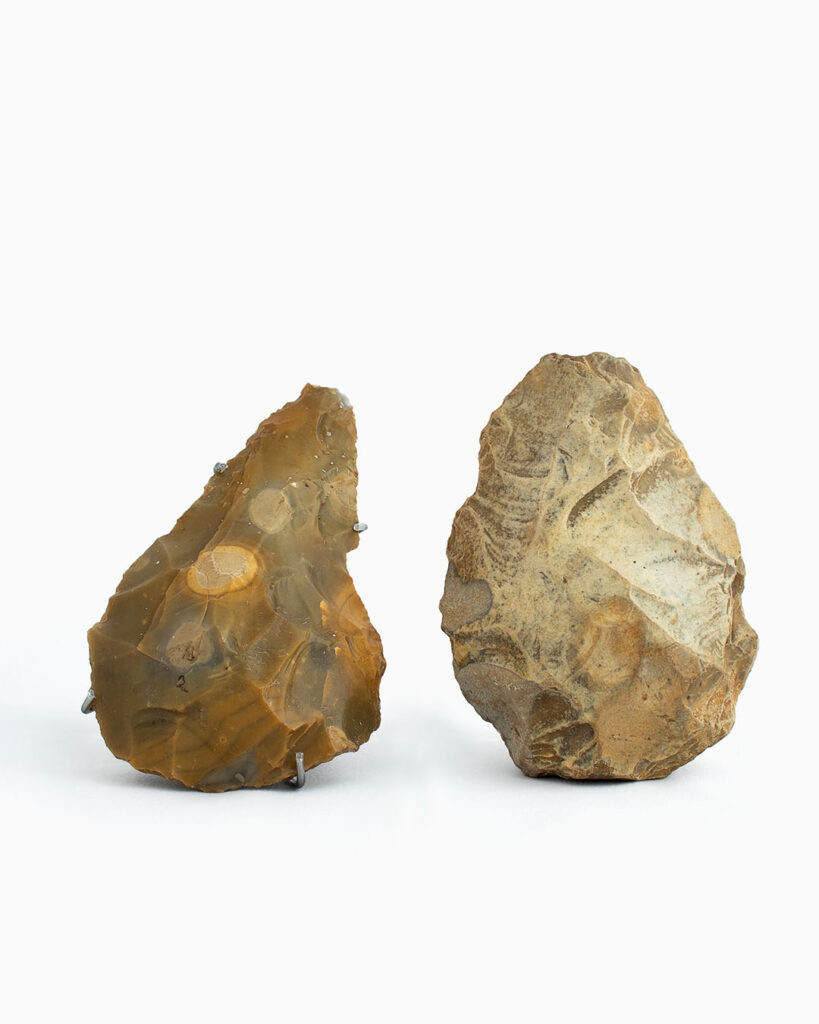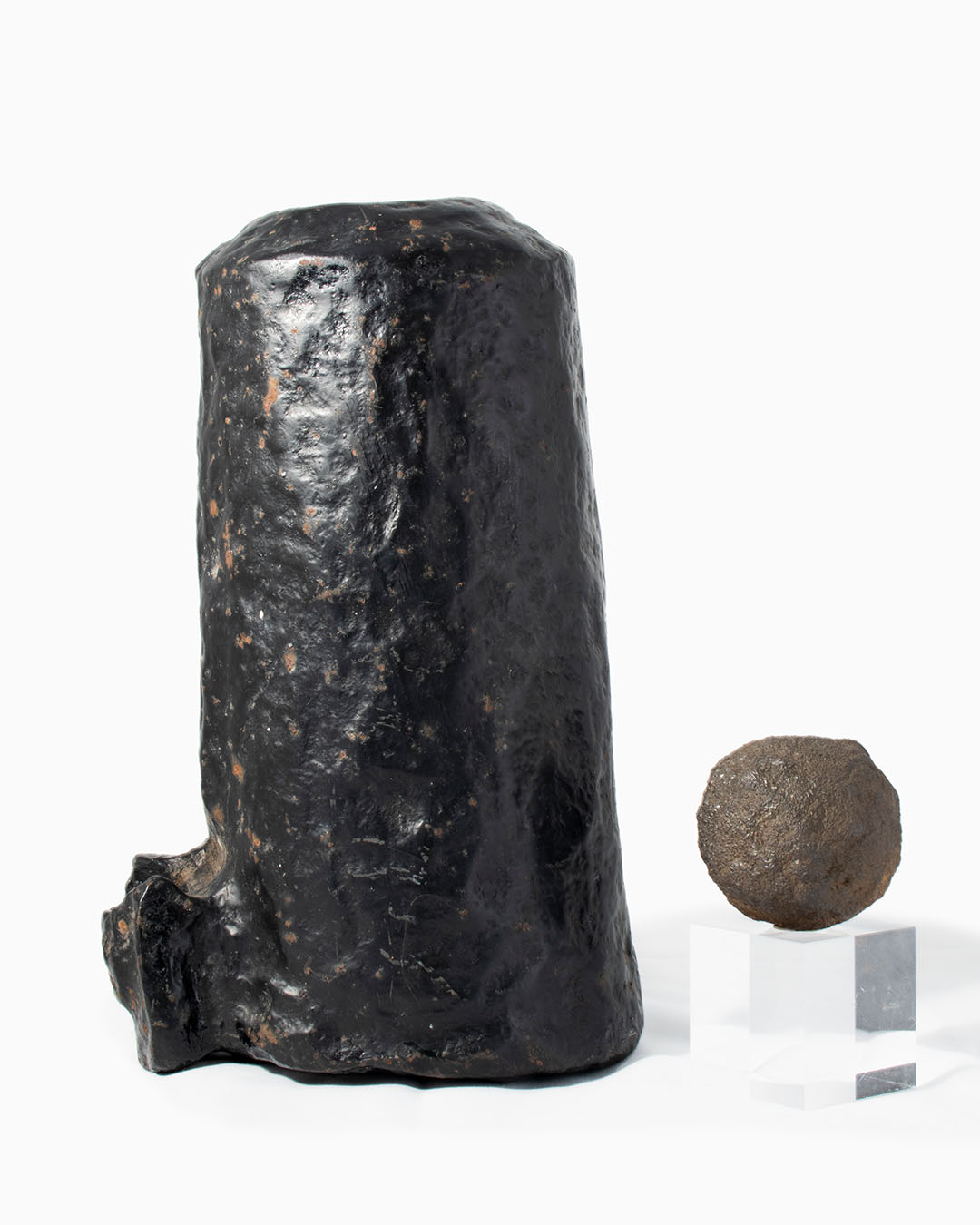
Stone Axes
These stone axes were found at Eartham Pit, Boxgrove, near Arundel. A relative of modern humans called Homo heidelbergensis used these stone axes. These hand axes were to butcher large animals such as horses. We know this because Archaeologists found bones of horses, bears, and other animals with tool markings.
Perhaps the most exciting discovery was the shinbone and two teeth belonging to Boxgrove man. These are the oldest discovered human fossils found in Britain, dating back 500,000 years ago. The tools found at Eartham Pit can tell us a lot about the Boxgrove man. For example, stone flake piles surrounding butchered animals suggest that eight individuals made large flint tools for the job. More evidence of other people, possibly younger and older members, were found nearby, which sheds light on their social structures.

Childs Gas Mask
During WW 2, Arundel took in evacuees like most small towns and villages across the country. In 1939 Arundel saw the arrival of thirteen hundred children at the station, with the town being responsible for six hundred of these children. Although Arundel’s probability of being attacked with poisonous gasses and other bombs was unlikely, every civilian had been issued a gas mask.
In 1938 Britain had more than 40 million gas masks issued. Despite not looking anything like the cartoon character, the child’s gas mask was known as the ‘Micky Mouse’. However, because children were scared to wear the gas mask, the name was kept, and bright-coloured materials, such as red rubber and blue tin, were used to appeal to children. There are straps to hold the mask on the head, and the rubber fits snugly around the child’s face. The lower part of the gas mask is a filter. This filter is a blue tin can with perforated holes holding an asbestos block. This chemical substance absorbs poisonous gases. Children would breathe the clean air into their mouths and then breathe out through the rubber flap.

Mortar Cannon
This Tudor mortar cannon is a durable iron cast, muzzle-loaded and short-barrelled artillery that fires hollow shells full of explosives at high arcing paths. In contrast to regular cannons designed for direct fire. A mortar path projection was between a 45° and 60° angle. The high angle allowed for Indirect fire at marks protected by walls, trenches or rough terrain. Troops were using gunpowder to launch the explosive or stone shot at such steep angles that they would fall into the castle’s grounds.
By the Tudor era, gunpowder weapons had become more accurate and varied. Larger gunpowder weapons such as cannons became a regular part of the Tudor armies, often used in laying sieges to enemy fortresses with great success. By the end of the Tudor period, traditional weapons such as bows and swords had been more or less completely replaced by gunpowder weapons on the battlefield.







